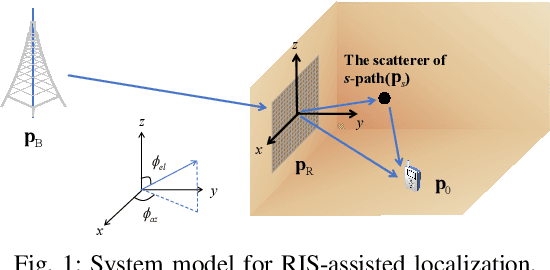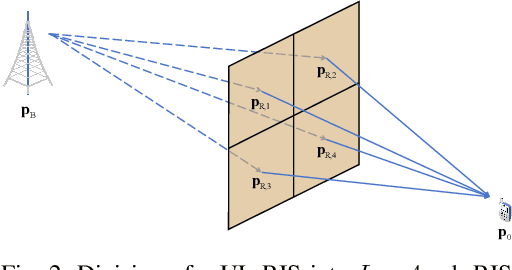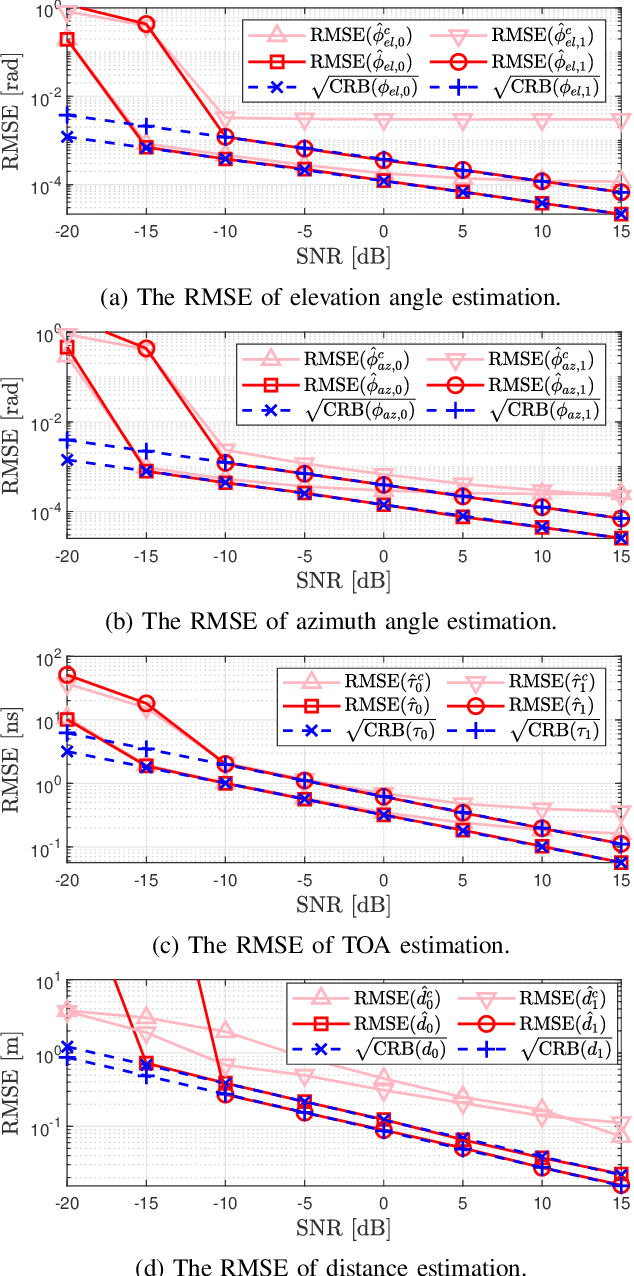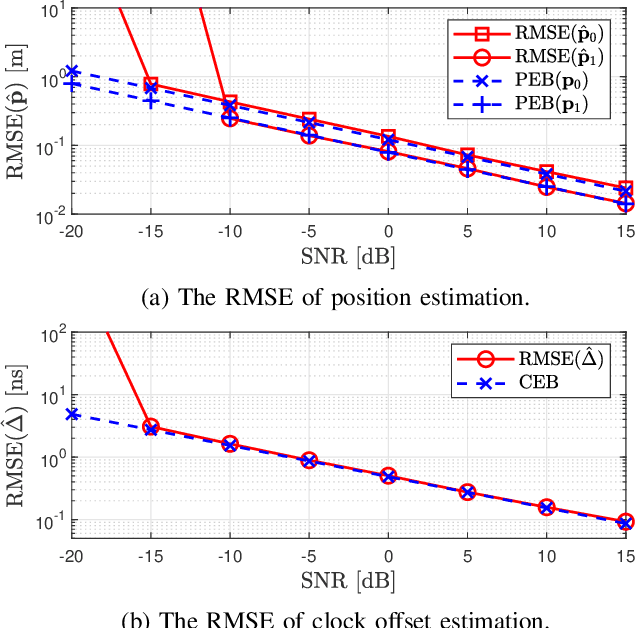RIS-Enabled Joint Near-Field 3D Localization and Synchronization in SISO Multipath Environments
Paper and Code
Mar 11, 2024



Reconfigurable Intelligent Surfaces (RIS) show great promise in the realm of 6th generation (6G) wireless systems, particularly in the areas of localization and communication. Their cost-effectiveness and energy efficiency enable the integration of numerous passive and reflective elements, enabling near-field propagation. In this paper, we tackle the challenges of RIS-aided 3D localization and synchronization in multipath environments, focusing on the near-field of mmWave systems. Specifically, our approach involves formulating a maximum likelihood (ML) estimation problem for the channel parameters. To initiate this process, we leverage a combination of canonical polyadic decomposition (CPD) and orthogonal matching pursuit (OMP) to obtain coarse estimates of the time of arrival (ToA) and angle of departure (AoD) under the far-field approximation. Subsequently, distances are estimated using $l_{1}$-regularization based on a near-field model. Additionally, we introduce a refinement phase employing the spatial alternating generalized expectation maximization (SAGE) algorithm. Finally, a weighted least squares approach is applied to convert channel parameters into position and clock offset estimates. To extend the estimation algorithm to ultra-large (UL) RIS-assisted localization scenarios, it is further enhanced to reduce errors associated with far-field approximations, especially in the presence of significant near-field effects, achieved by narrowing the RIS aperture. Moreover, the Cram\'er-Rao Bound (CRB) is derived and the RIS phase shifts are optimized to improve the positioning accuracy. Numerical results affirm the efficacy of the proposed estimation algorithm.
 Add to Chrome
Add to Chrome Add to Firefox
Add to Firefox Add to Edge
Add to Edge